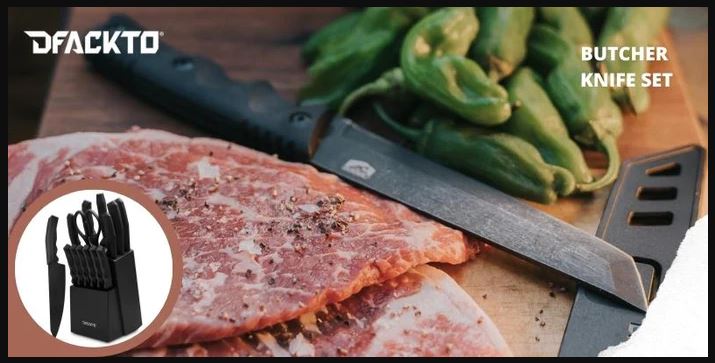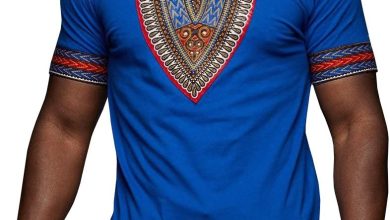
A stainless steel butcher knife set typically comprises a wide range of knives to cut and carve the meat into its final form. One would usually find a butcher knife in the meat processing trade as people use it to split, strip, and cut primary meat cuts into sizable cuts for buyers.
Usually, these knives feature a large, thick, curved front and people use them by combining a boning knife. Thus, it will turn carcasses and large chunks of meat into primal cuts. Typically, a butcher knife is too wide to boning, too stiff to fillet, too long to camp, and too straight to skin. So, people often use it in combination with other derivatives of the butcher’s knife-like boning knife, carving knife, skinning knife, and cleaver, which specialize in particular tasks. Today’s modern knife set has various components. Let us talk about each in detail:
- Boning knife
A boning knife helps cut and slice meats from bones, fish, and poultry. Characterized with a flexible and thin long blade, a boning knife is either a straight or curved blade based on its application. If we compare it to a carving knife, the blade of a boning knife is thinner for increased manoeuvrability to cut around bones and sinew
- Chef knife
The chef knife is a multi-purpose knife specifically performs numerous tasks. Some of the typical variations include German/French/Japanese chef butcher knives. They mince, slice meat, chop vegetables, and disjoint large cuts.
- Carving knife
Carving knives carves out the exact quantity and quality of meat and features sharp points. With a long thin blade, this knife can cut through cartilage relatively easy to get as much meat as possible.
Usually, the carving knife’s blade is wider, thus making it easier to keep the direction of the cuts straight. They often have scalloped edges to avoid any food sticking to the blade while cutting.
People mostly use this knife during food preparation as their large edges make it quicker and more convenient to accomplish kitchen activities.
- Slicing Knife
As the name suggests, a slicing knife cuts slices of cooked or smoked meat, poultry, and fish. The blade on a Slicing knife is long (ranging between 8 and 12 inches in length), thin, and made with a round or pointed tip. Based on the brand of knife you buy, the blades are flexible or rigid.
You can use flexible blades for firmer, fleshed food items like dry sausages or prosciutto, while you can use for fleshed items with a more moist texture, like baked hams.
- Filleting knife
A ‘fillet’ is a fleshy boneless piece of meat. So undoubtedly, a fillet knife removes bones, cartilage, and skin from the meat. These knives come with ‘flex’ to make it that much easier and quicker for your blade. It will navigate bones and joints and slice where you want it to.
As it allows for good control when picking out bones and removing skin and cartilage, you can use it for filleting fish. The blade on fillet knives is usually 15-28cm long. Thus, it is ideal for moving easily along the backbone and under the skin of a fish.
- Skinning knife
Typically, a skinning knife features a wide and short blade. The edge is robust and does not exhibit much flexibility or spring. These knives remove animal skin from the meat and have a very fine and keen blade for this.
These are the basic components of a butcher knife set.
Conclusion–
There are different knives in a butcher knife set based on the task at hand. If you are slicing cooked meat, a carving knife would be suitable. A boning knife is suitable to weave around bones and cartilage, depending on what you are cutting. When you are prepared and have the suitable tools, it will make all the difference when you cut and prepare your food.




